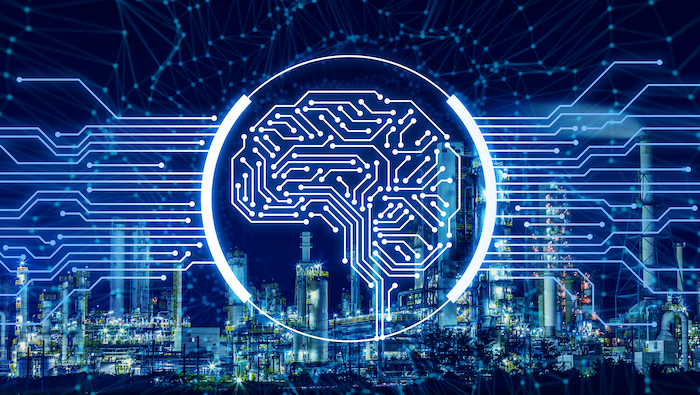“If you know the enemy and know yourself, you need not fear the result of a hundred battles. If you know yourself but not the enemy, for every victory gained you will also suffer a defeat.” For controllers or accounting leaders, this Sun Tzu quote might not mean much, because well, you usually only need to know what’s going on at your own business.
However, in theory, your enemy could be someone (or something) competing for your job. Artificial intelligence, machine learning, and robotic process automation may all feel like enemies—one of the first steps to automating a white-collar worker out of his or her job. But are they enemies? Maybe.
Over the next few weeks, we at the Controllers Council will spend a healthy portion of time looking at AI, ML, and RPA, discussing what it is, why you shouldn’t fear it, what it should be used for, and how to reinforce your value in the coming years. Today, we’re looking at a few definitions so you can understand how to win the war.
What Is AI? Many Different Things. Definitions of AI in the Workplace
The thing about AI, it means a lot of different things. Cars that can process thousands of inputs to make decisions, optical character recognition technology that learns the components of an expense report to make future processing easy, or chatbots that make ordering easier (in part three, we will discuss the use cases).
A recent article from our friends at the Business Software Education Center explored the basic definitions of AI in the workplace, noting the following products.
Robotic Process Automation: The Early Stages
Likely the most introductory AI you will use (though some may doubt if this constitutes AI), robotic process automation represents the automation of basic tasks using business logic and rules.
As the entirety of RPA is based on strict rules and there is no learning, the jury is out on whether it actually constitutes AI. According to the Enterpriser’s Project:
RPA can do a great job of handling repetitive, rules-based tasks that would previously have required human effort, but it doesn’t learn as it goes like, say, a deep neural network. If something changes in the automated task – a field in a web form moves, for example – the RPA bot typically won’t be able to figure that out on its own.
RPA: Cheap and Low-Risk
In fact, this has likely been incorporated in your business or workflows already. Things like invoice processing, claims processing, and so much more have benefitted from the introduction of RPA, and its use will only continue to grow.
Machine Learning: AI That Evolves
The conventional view of machines is they do what they’re programmed to do. ML disrupts this notion, taking data analysis to a new level. A branch of artificial intelligence (AI), it automates analytical model building so that machine systems can learn from data they receive.
In Machine Learning, data—often in very large amounts—is fed into an algorithm so the algorithm can train itself and learn.
Deep Learning: The Next Level of ML
While ML technology is often based on the algorithms provided, deep learning is the next iteration. In deep learning, there are more layers than limited algorithm-based improvement. Deep learning relies on artificial neural networks.
The learning process is deep because the structure of artificial neural networks consists of multiple input, output, and hidden layers. Each layer contains units that transform the input data into information that the next layer can use for a certain predictive task. Thanks to this structure, a machine can learn through its own data processing.
This will rely on much more data, much more processing power, and requires much more training. After training, the outputs will be much more complex. Learn how Deep Learning differs from ML here.
Computer Vision: Teaching AI to Understand Visuals
Computer Vision is defined by HBR as “A field of artificial intelligence that trains computers to interpret and understand the visual world. Using digital images and deep learning models, machines can accurately identify and classify objects—and then react to what they “see.””
The use cases for this are among the most mature, yet also present reasonably intriguing long-term uses. Computer vision is already successful for simple things. Google Lens has been evolving for the last decade to identify items you snap with a camera.
The business cases are already established. It could be something as simple as automating the processing of optical character recognition—teaching AI to understand different receipts or invoices and route it to the right person. As it evolves, computer vision presents incredible uses in manufacturing, healthcare, and retail. Amazon Go is already seeing traction.
Natural Language Processing: Robot Support
Natural Language Processing (NLP) is the study and application of techniques and tools that enable computers to process, analyze, interpret, and reason about human language.
Another reasonably mature AI category with a huge amount of room for growth, NLP still needs to derive meaning and context from human language. Think of it like this. Your smart speaker can add something to your shopping list, but the conversations you’d have with Alexa are limited. You could likely find the right document with the help of a chatbot or get assistance finding the right item of clothing, but more detailed requests often need clarification.
According to Unite.ai, Natural Language Processing involves the application of various algorithms capable of taking unstructured data and converting it into structured data. If these algorithms are applied in the wrong manner, the computer will often fail to derive the correct meaning from the text.
As this evolves, chatbots will be able to detect sentiment and semantics, using the inputs to create truly unique and personalized dialog. Learn about some of the underlying terms that go into NLP here.
Explainable AI
One of the biggest drivers of fear in AI is its lack of empathy. In the same sense as a paperclip-making robot destroying the infrastructure because it couldn’t differentiate support beam steel from paperclip steel, it’s vital to understand how AI came to any conclusion it made so that corrective action can be taken before it’s too late.
AI regularly operates in a black box of existence. While an AI black box is fine in above-mentioned workflows like a chatbot finding the right department or analyzing the sentiment of a social feed, when AI is in charge of life and death, it needs to explain how it came up with the decision. Not only will this help fix errors in the learning, it will help us to understand the most efficient path to a decision.
One of the biggest places explainable AI will come into place is autonomous vehicles. What inputs caused the car to swerve? As defined by HBR, explainable AI is Machine learning techniques that make it possible for human users to understand, appropriately trust, and effectively manage AI.
In simple terms, explainable AI is akin to showing your work in a math problem. What inputs resulted in what outputs? Why did the AI come to the conclusion? This is the simple way of looking at explainable AI.
AI Operations (AIOps)
IT operations has evolved. But what’s next? Will IT experience a renaissance in the wake of digital transformation? Yes. IT departments, while often facilitating transformations of their own, have an opportunity to do more. Enter AIOps, Artificial Intelligence for IT Operations.
Artificial Intelligence for IT Operations describes the paradigm shift required to handle digital transformation in IT Operations. According to Gartner and BMC, AIOps refers to multi-layered technology platforms that automate and enhance IT operations by
- using analytics and machine learning to analyze big data collected from various IT operations tools and devices, in order to
- automatically spot and react to issues in real time.
How will a company stand up to smarter threats? Humans can only do so much, but with AIOps, threat vectors can be scanned more efficiently. Learn more about AIOps here.
Setting Your Accounting Department Up for Success in the AI World
One of the first departments outside of IT to start looking critically at IS was the accounting world. However, it has generated a lot of fears that the implementation of AI might steal jobs or destroy the department. In part two, we discuss why this is not the case.




